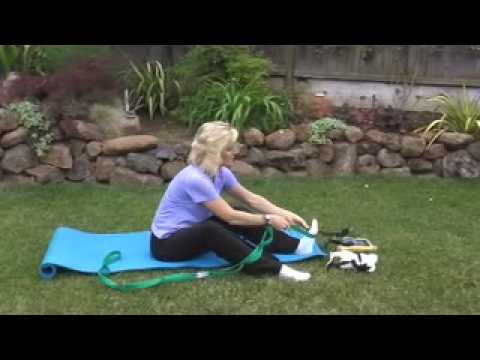Home Remedies For Treating Your Plantar Fasciitis How To Make amp; Do
Plantar Fasciitis: Symptoms, Treatment and Prevention

In this final article in both part series on Plantar Fasciitis, Brad Walker discusses the normal symptoms of the painful sports accident as well as the most effective treatments once diagnosed. Brad also describes some very important precautionary measures that are crucial in avoiding Plantar Fasciitis. A feet injury such as plantar fasciitis generally occurs in one foot. Bilateral plantar fasciitis is unusual and is commonly the result of a systemic arthritic condition that is remarkably rare among athletes. Males have problems with a somewhat better occurrence of plantar fasciitis than females, perhaps therefore of better weight in conjunction with greater speed and ground impact, as well as less versatility in the feet.Typically, the victim of plantar fasciitis activities pain upon growing after sleep, particularly the first step out of foundation. Such pain is securely localized at the bony landmark on the anterior medial tubercle of the calcaneus. In some instances, pain may avoid the athlete from walking in a normal heel-toe gait, triggering an abnormal walk as means of reimbursement. Less common regions of pain are the forefoot, Achilles tendon, or subtalar joint.After a limited period of walking with this type of feet injury, the pain usually subsides, but returns again either with vigorous activity or prolonged standing or walking. Around the field, an altered gait or excessive stride structure, along with pain during working or jumping activities are tell-tale symptoms of plantar fasciitis and should be given prompt attention. Further indications of the accident include poor dorsiflexion (raising the forefoot off the bottom) scheduled to a shortened gastroc complex, (muscles of the leg). Crouching in a complete squat position with the sole of the feet flat on the ground can be utilized as a test, as pain will preclude it for the athlete suffering from plantar fasciitis, leading to an elevation of the heel due to tension in the gastroc complex.TreatmentTreatment of plantar fasciitis may also be a drawn out and frustrating process. An application of treatment should be carried out with the aid of someone experienced and proficient in the affliction. Typically, plantar fasciitis will demand at least six weeks and up to half a year of conservative care to be totally remedied. Should such attempts not provide pain relief to the athlete, more intense measures including surgery may be considered.The original goals of physical remedy ought to be to increase the passive flexion of the ft . and improve flexibility in the foot and ankle, eventually resulting in a full go back to normal function. Long term inactivity in vigorous sports is often the price to be paid for thorough recovery. 50 % measures can result in a long-term condition, occasionally severely limiting athletic ability.As a huge amount of time is spent in bed during sleeping hours, it is important to ensure that the sheets at the foot of the bed do not constrict the feet, resulting in plantar flexion where the foot is bent straight out with the toes pointing. This constricts and in doing so shortens the gastroc organic, worsening the condition. A heating up pad positioned under the muscles of the calf for a few minutes prior to increasing may help loosen tension, increase blood flow in the low leg and decrease pain. Also while asleep, a night splint may be used in order to hold the rearfoot in a neutral position. This will assist in the recovery of the plantar fascia and ensure that the foot will not become flexed at night time.Careful attention to footwear is crucial in avoiding foot injuries. Every effort should be made to wear comfortable shoes with proper arch support, fostering proper ft . posture. Should arch helps prove inadequate, an orthotic boot is highly recommended. Fortunately, most instances of plantar fasciitis respond well to non-operative treatment.Restoration times however fluctuate enormously in one athlete to some other, depending on years, overall health and physical condition as well as severeness of injury. A wide period between 6 weeks and six months is usually sufficient for proper recovery. Additionally, the setting of treatment must be adaptable with regards to the details of a particular athlete?s injury. Methods that prove successful in a single patient, may well not improve the injury in another.Early treatment of foot injuries typically includes the utilization of anti-inflammatory medication, icing, stretching activities, and heel inserts and splints. Cortisone injections may be essential to achieve satisfactory restoration and retard irritation. In later levels of the treatment process, typically following the first week, glaciers should be discontinued and replaced with temperature and massage.It is very important that any activity known to produce irritability or trauma to the plantar fascia be immediately discontinued, including any activity involving repeated impact of the heel on a hard surface, particularly, jogging. Should pain from the accident persist, additional diagnostic studies should be carried out to rule out other, more exotic factors behind heel pain including stress fractures, nerve compression incidents, or collagen disorders of your skin.
Home Remedies For Treating Your Plantar Fasciitis How To Make amp; Do 's IMAGE
Related Images with Home Remedies For Treating Your Plantar Fasciitis How To Make amp; Do
on Pinterest Swollen ankles, Plantar fasciitis and Home remedies

Conservative Treatment for Plantar Fasciitis

breakthrough treatment for Plantar Fasciitis Pain

plantar neuroma this syndrome is often confused with plantar fasciitis





0 komentar: